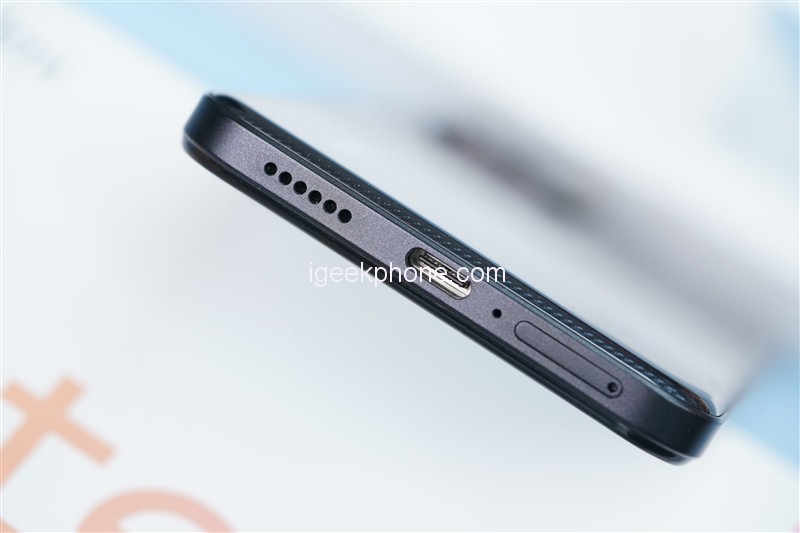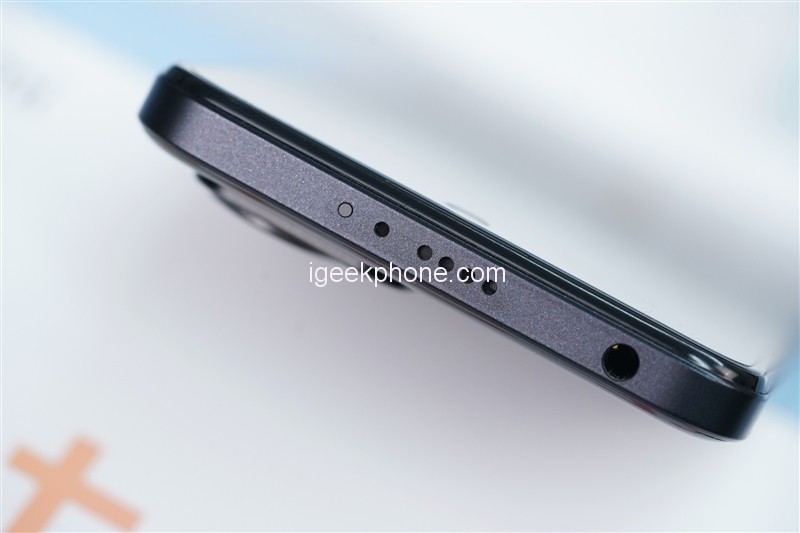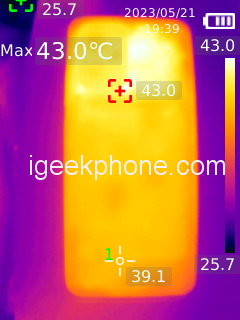As the big brother of the mid-range model – Redmi, its representative model, in addition to the K series, which is the flagship “flagship goalkeeper”, can not be ignored, of course, there is also the Little King Kong series of Note. According to the release habits of the Note series, the main “Performance King Kong” will be launched in the first half of the year, and the “Experience Little King Kong” will be launched in the second half of the year. Towards the end of the first half of this year, the new Redmi Note 12T Pro came to us belatedly. Judging from the name, this new phone is naturally an iterative upgrade of last year’s Redmi Note 11T Pro. The “T” in the name is actually the abbreviation of “Turbo”. With the suffix of Pro, it sounds like the buff is full.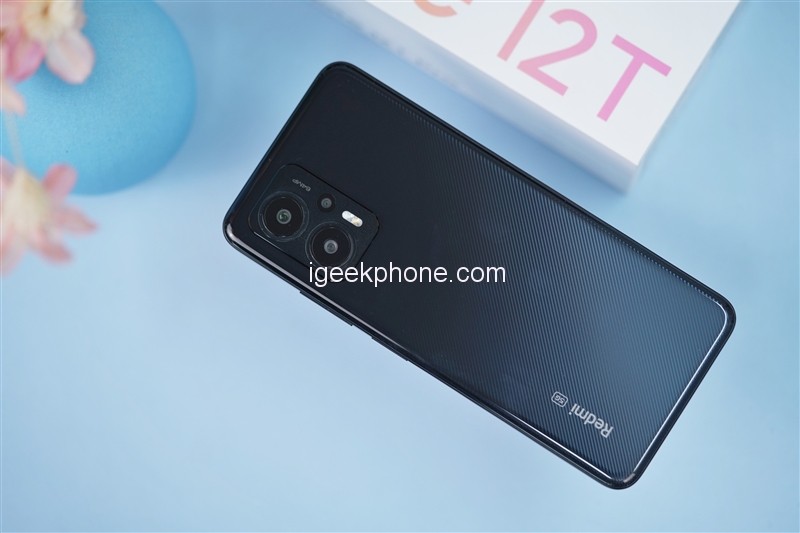
In terms of specifications, the screen size, appearance, and camera specifications have not changed. However, the biggest internal change is to upgrade the previous generation Dimensity 8100 to Dimensity 8200-Ultra. This chip is made of TSMC’s 4nm process technology. 4 Cortex-A78 large cores and 4 Cortex-A55 small cores form 8 Core CPU, and the main frequency of one of the super cores has been increased from 2.85GHz to 3.1GHz.
The Dimensity 8200-Ultra uses the same Mali-G610 MC6 as the Dimensity 8100. After checking, the GPU frequency of the two is also different. Combined with the high-frequency CPU, it will theoretically bring better performance to the Redmi Note 12T Pro. gaming performance.
So let’s take a look at the performance of Redmi Note 12T Pro in terms of performance and battery life, whether it can be called a new generation of “performance King Kong”.
Design & Appearance
The front of the Redmi Note 12T Pro is a 6.6-inch LCD screen with a resolution of 2460×1080 and a ratio of 20.5:9. It supports a refresh rate of 144Hz, supports up to 144z 7-speed transmission, and also supports Dolby Vision and HDR10.
In terms of eye protection, the LCD screen equipped with Redmi Note 12T Pro further reduces harmful blue light by 20% compared with conventional screens. With full DC dimming and true color display, it not only protects the eyes but also has excellent display effects. The overall size is 163.64×74.29×8.87mm and weighs about 200mm.
The Redmi Note 12T Pro we received is a carbon fiber black color scheme, and the overall shape is not significantly different from the previous generation. The edge of the middle frame adopts a certain 2.5D transition, which makes the grip very comfortable and does not produce a “cutting feeling” like the iPhone.
However, the style of the back looks familiar. It looks like the Kevlar texture of the K60 Pro. It is very smooth to the touch. It should be covered with a layer of plastic. This design makes the Redmi Note 12T Pro more “Turbo”.
The details of the rear camera module adopt a three-camera solution consisting of a 64-megapixel main camera + 8-megapixel ultra-wide-angle + 2-megapixel macro lens. The power button and the volume up and down buttons are on the left side of the fuselage, and the power button integrates fingerprint recognition. A look at the top and bottom details, equipped with dual speakers, infrared, 3.5mm audio interface, Type-C interface, and SIM card slot. The water jacket, charger, manual, and card needle are included in the package. The included 67W charger.
Theoretical performance
1. Antutu 9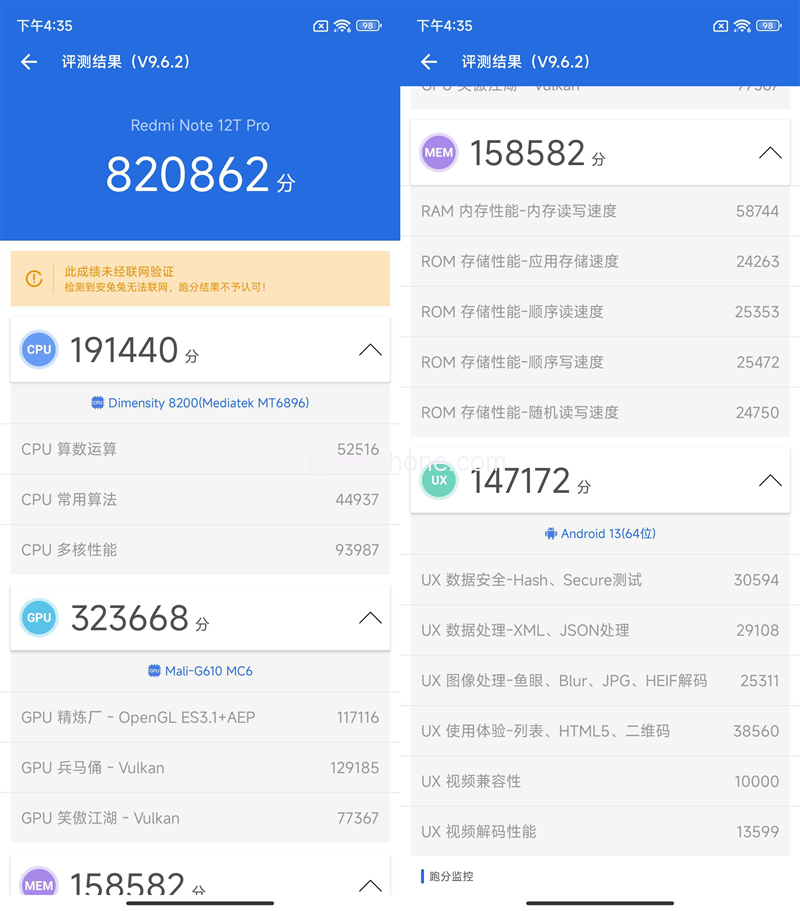
In the AnTuTu V9 performance test, the Redmi Note 12T Pro scored 820862 points. Compared with the previous generation Redmi Note 11T Pro+, the score difference is not that big, only 2.1% difference.
Among them, the CPU score is 191440, the GPU score is 323668, the memory score is 158582, and the UX score is 147172, which have increased by 7.1%, 4.3%, 5.7%, and -9.2% respectively.
2. AnTuTu 10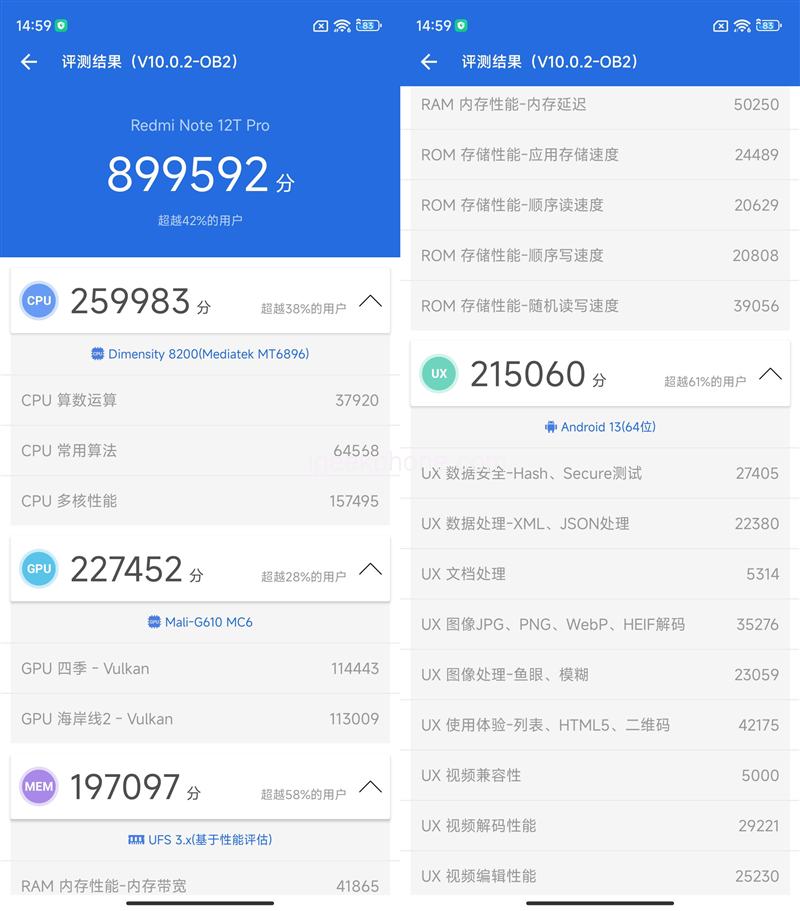
AnTuTu recently launched a new version V10, which has upgraded the test items such as CPU, GPU, storage, and UX. In the AnTuTu V10 test, Redmi Note 12T Pro scored 899592 points, of which the CPU score was 259983, the GPU score was 227452, the memory score was 197097, and the UX score was 215060.
3. GeekBench 5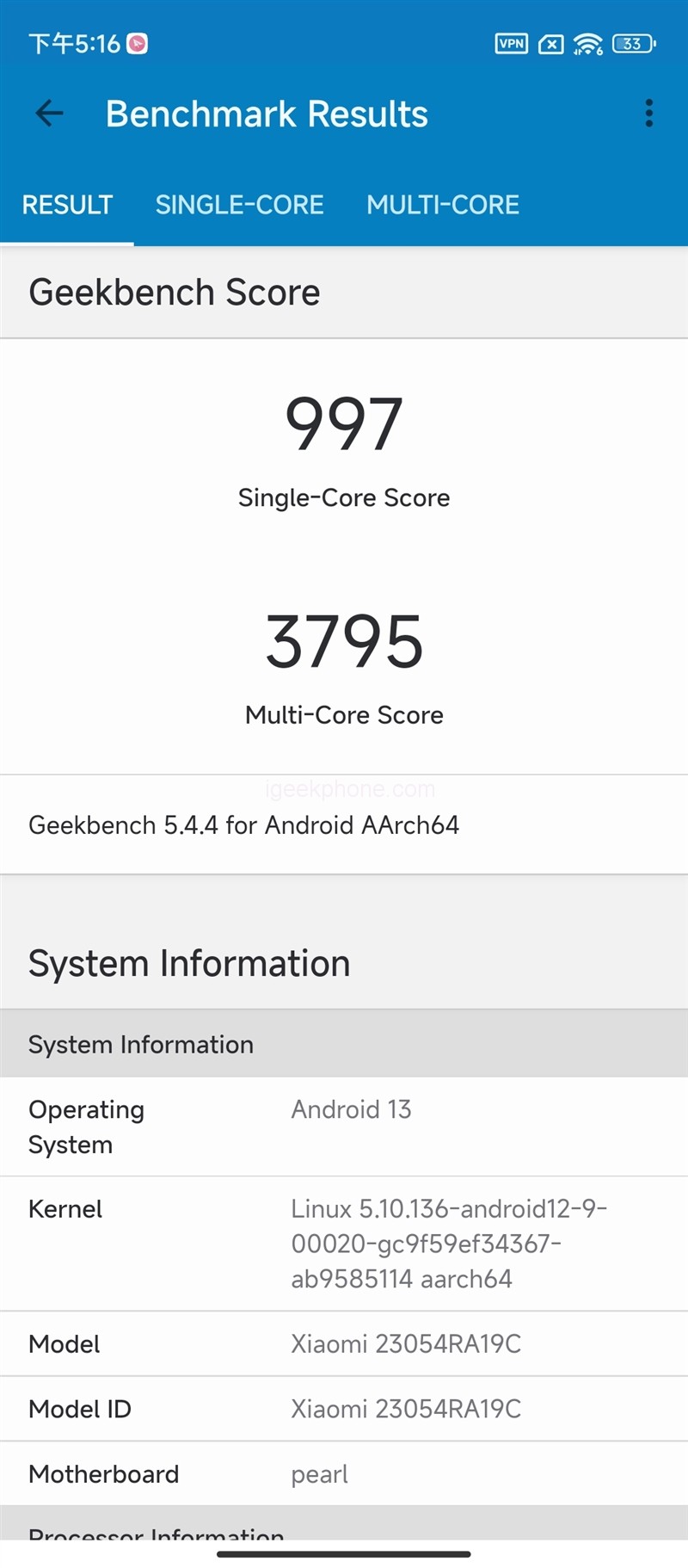
In the Geekbench 5 test, the single-core score is 997 and the multi-core score is 3795.
The main reason is that the single-core improvement is more obvious, about 11%, but the multi-core difference is only 0.6%, which is not too big.
4. GeekBench 6
In the Geekbench 6 test, the single-core score is 1246 and the multi-core score is 3954. Compared with the previous generation, the single-core lead is 20.6%, and the multi-core is also 14.1%. The single-core improvement is also more obvious.
The common point of GeekBench 5 and GeekBench 6 is that the single-core improvement is relatively large. However, considering the increase in the CPU frequency of the Dimensity 8200-Ultra chip, it is also necessary to consider that GeekBench 6 has optimized the running score rules and pays more attention to the commonality of multi-core. Collaboration, so the results of the two are biased differently.
5. AndroBench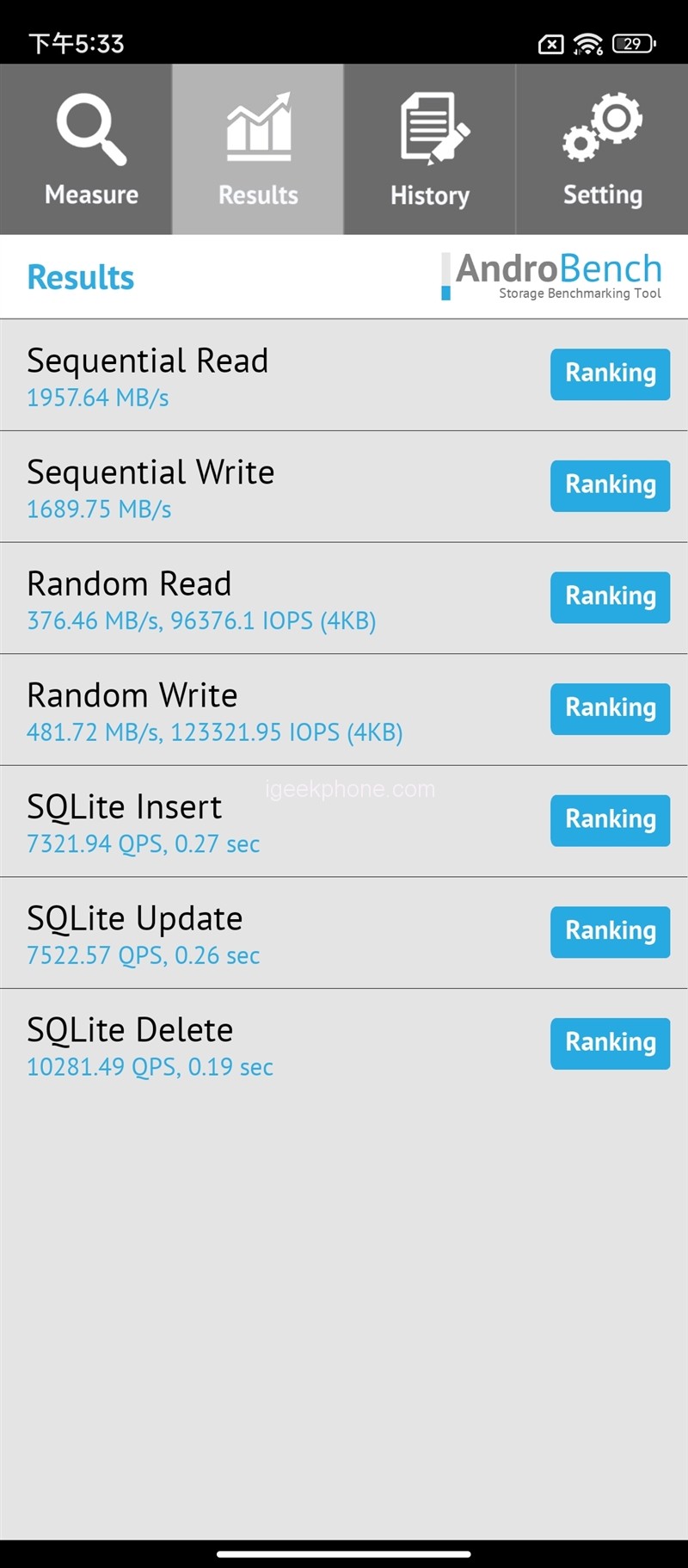
After the Androbench test, the sequential read rate reached 1958MB/s, and the sequential write rate was 1690MB/s, which increased by 15.2% and 40.8% respectively.
This is because the main frequency of the CPU of the Dimensity 8200-Ultra has been increased to 3.1GHz, which also has a certain impact on the speed of the flash memory.
The random read speed reaches 375MB/s, and the random write rate reaches 482MB/s. In this respect, there is no significant difference in performance from the previous generation.
Game Test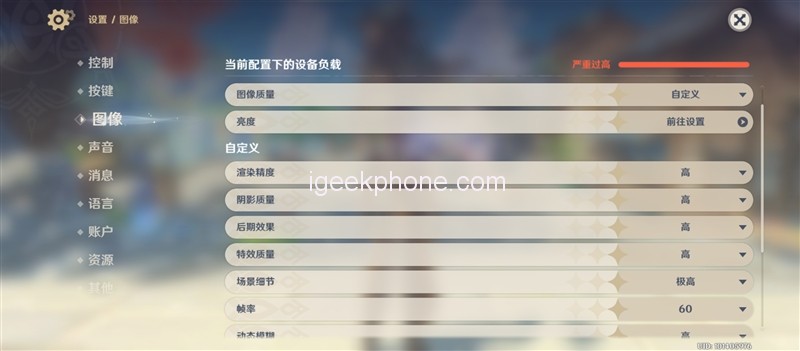

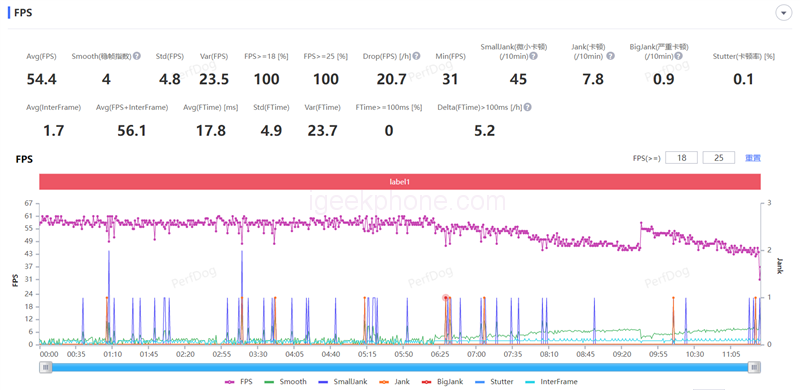
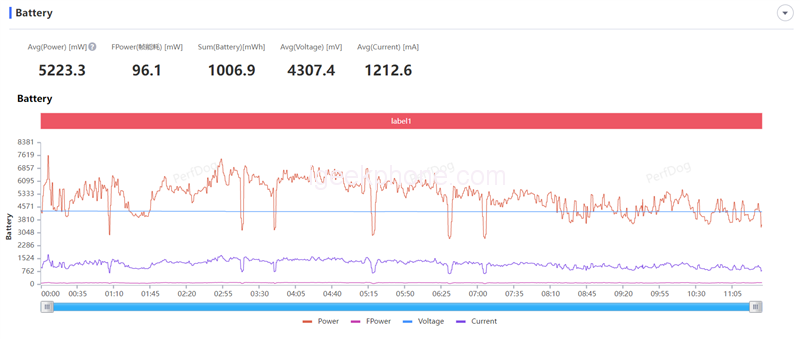
When we evaluated the Redmi Note 11T Pro+ equipped with Tianji 8100 last year, in the game killer “Yuan Shen”, the highest frame rate was only 50 frames, and it was directly locked to 45 frames after 7 minutes.
So what kind of improvement will the Redmi Note 12T Pro equip with Dimensity 8200-Ultra have in “Yuan Shen”?
The game changes the picture quality to the highest quality, and on this basis, changes the frame rate to 60. For objective comparison, use the same route for testing.
The starting frame rate of “Yuanshin God” is around 60 FPS. As the running time increases, the phone starts to heat up obviously. After 10 minutes, the game baseline drops to 50 FPS, with an average frame rate of 54.4 FPS. Compared with the average score of the previous generation Dimensity 8100, which was only 46 FPS, it is much better.
In particular, the running curve of the game is more stable, and there will be no sudden drop in the frame rate. The average power consumption is only 5W, which is an ideal result for a high-load game like “Yuan Shen”. The highest temperature in the back chip area reached 43 degrees Celsius, and the grip area was 39.1 degrees Celsius, which is relatively warm, but not too hot.
However, considering that most users press and hold the frame to fix it when playing games, the impact of the hot area of the camera is not too great. For players who are sensitive to temperate, you can consider reducing the picture quality of the game when playing high-load games such as “Original God”.
After the pressure on the screen is reduced, the heating of the mobile phone will also be relieved, and at the same time, the frame rate of the game will be more stable and higher. If you have higher requirements for image quality and frame rate, it is recommended to turn on the performance mode and use it with a cooling back clip.
Battery
Charging test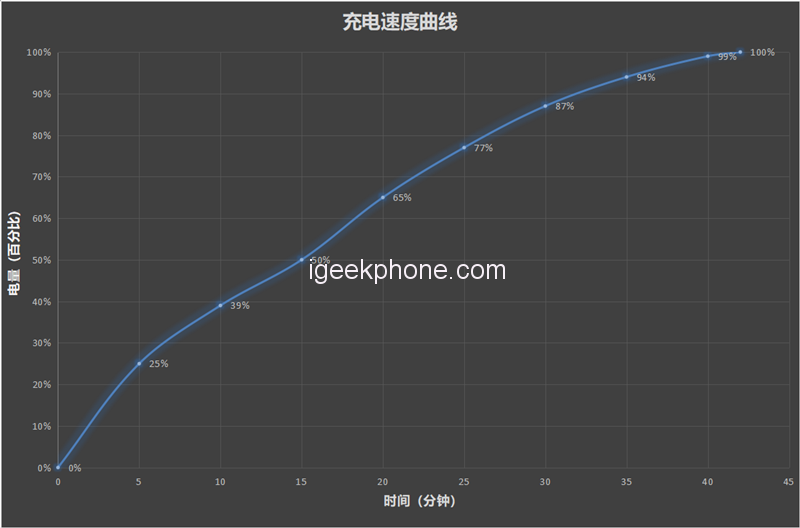
The measured 67W fast charging of Redmi 12T Pro can charge the 5080mAh battery to 50% in 15 minutes, and it takes 42 minutes to charge to full blood.
Endurance test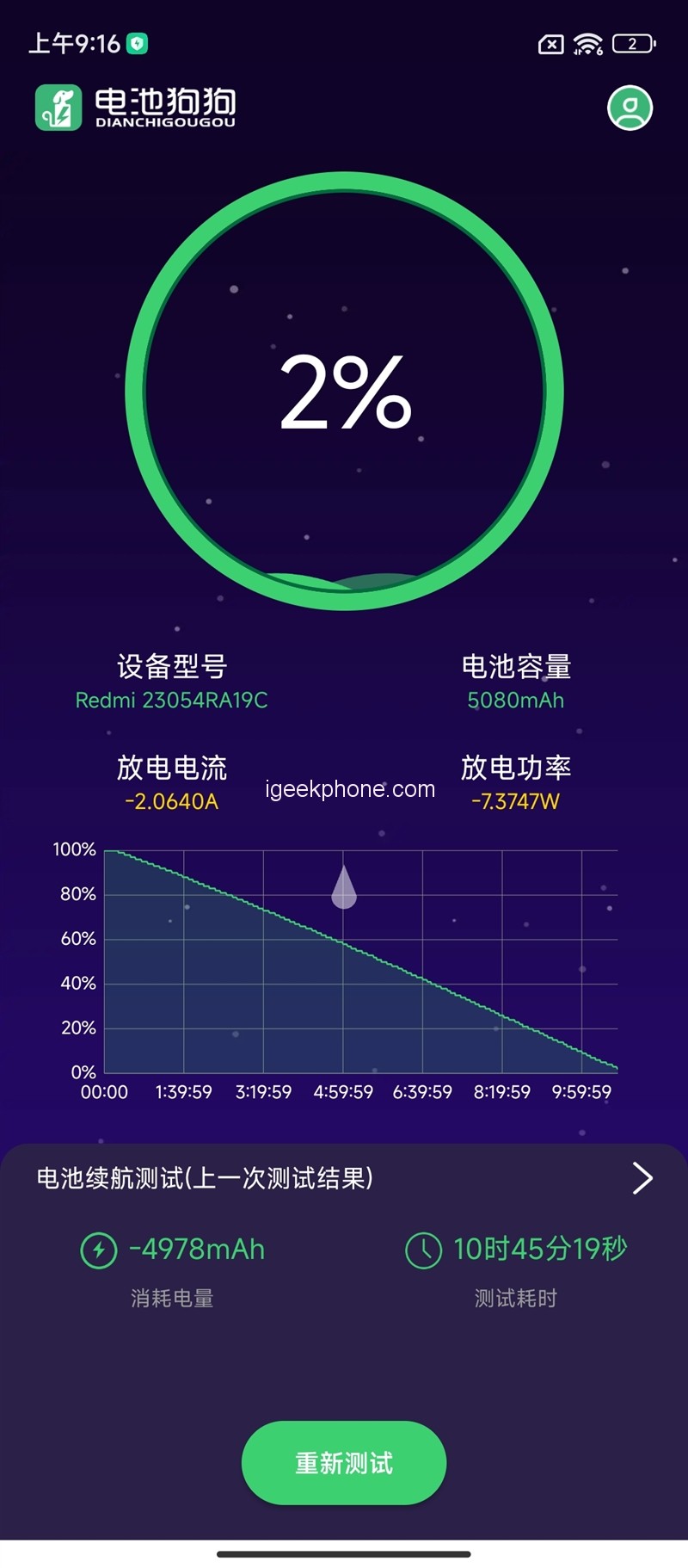
For the battery life, we use a professional battery life test tool – the battery dog produced by Kuai Technology.
In terms of test items, we chose the extreme power battery life test and checked all the test items including CPU high voltage, CPU multi-threading, AI recognition, picture browsing, video playback, and web browsing to simulate user usage scenarios and restore the real load to the greatest extent. Infinitely close to the real power consumption.
In the endurance test, we changed the desktop refresh rate to 60Hz, and the power mode was balanced. The Redmi Note 12T Pro can achieve a battery life of 10 hours and 45 minutes from full power to 2%.
The Dimensity 8200-Ultra has made some progress in terms of energy efficiency. While improving the chip specifications, the battery life is 45 minutes longer than that of competitors. While meeting your uninterrupted use needs throughout the day, it allows you to go out and play. Mobile phones are no longer embarrassing.
Verdict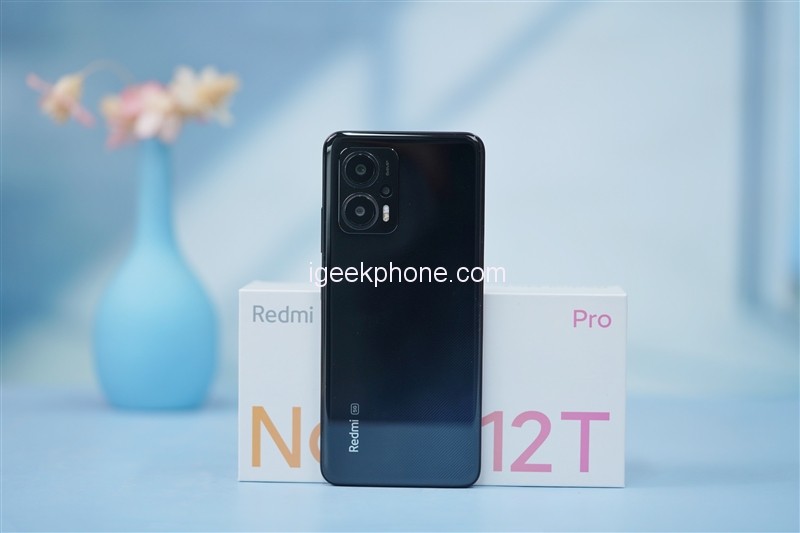
With the rise of MediaTek chips in recent years, the mid-range thousand yuan machine can also have a performance close to the flagship, and it will no longer be the weakest link in the experience. This Redmi Note 12T Pro, after replacing the Dimensity 8200-Ultra chip, although the total score difference in AnTuTu is not big, the performance of the game speaks for itself.
In the test of “Yuanshin”, its average frame rate reached 54.4 FPS. You must know that the previous generation’s score was only 46 FPS!
This is also due to the specification improvement brought by Dimensity 8200-Ultra, coupled with the optimization of MIUI, which brings the gaming experience to another level. The energy efficiency ratio of Dimensity 8200-Ultra is also very good. While improving performance, it does not reduce battery life. Equipped with a 5080mAh battery, it can achieve 11 hours of battery life. Such an excellent performance is commendable.
This Redmi Note 12T Pro, considering its starting price of 1599 yuan, can have such performance and battery life. I think its experience is completely worthy of the title of the new generation of “LCD performance King Kong”.
Read Also: Redmi K60 vs iQOO Neo 8: Which Smartphone Should You Buy?
Do not forget to follow us on our Facebook group and page to keep you always aware of the latest advances, News, Updates, review, and giveaway on smartphones, tablets, gadgets, and more from the technology world of the future

.jpg)








